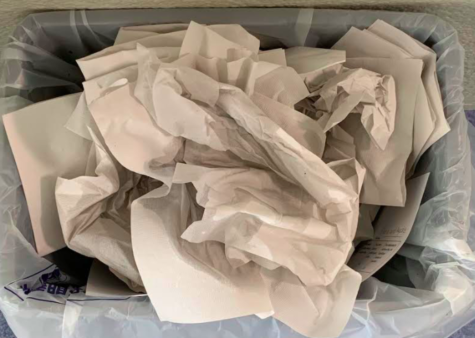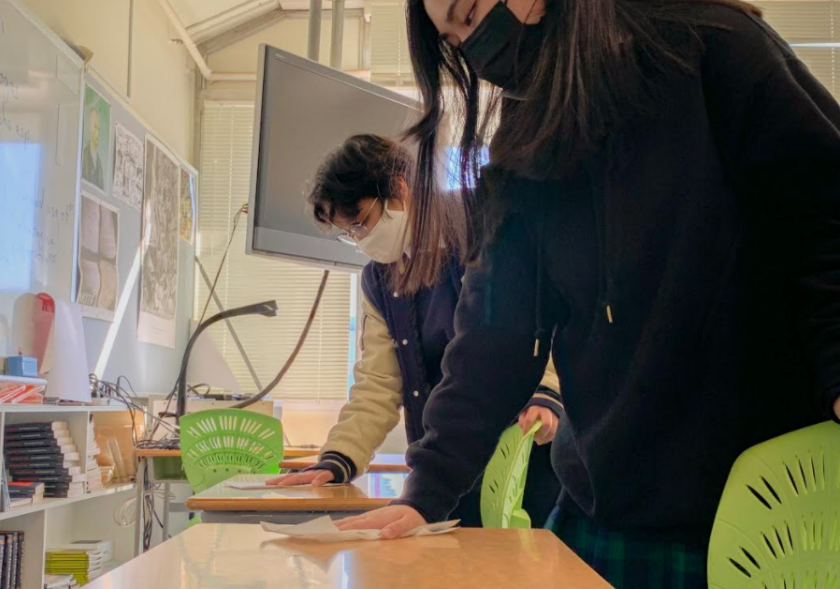Paper towels: A rising source of Sacred Heart’s carbon footprint

Paper towels: what once was just a “thick sheet of paper that you use to dry your hands”, as defined by the Oxford Dictionary, has now become a large contributor to Sacred Heart’s environmental impact.
Ever since the outbreak of the COVID-19 pandemic, Sacred Heart has set up precautionary measures to combat the spread of the virus. Wiping our desks with alcohol and paper towels to disinfect our workspaces has become a prominent way in which Sacred Heart does this.
To investigate this further, we sent out a survey to our high school student body. We found that of the 58 respondents, roughly 30% were using 10 additional paper towels per day, and the other 70% responded that they were using up to more than 15 sheets per day compared to before the pandemic.
We also found that we use roughly a minimum of 51,240 paper towels to disinfect classroom desks every month. This number does not include the number of paper towels that are being used in bathrooms, extra-curricular activities, and by faculty members.
Although the Japanese Shimbashi paper towels Sacred Heart uses are made of 100% recycled paper, the input energy for production as well as direct emissions from waste transportation vehicles, release airborne particles that pollute our environment. Over the span of one year, we cause 20 kilograms worth of CO2 emissions from transporting the recycled waste, alone. According to GreenSteve.com this amount of carbon dioxide use would account for 30 days of 16 liters of household water usage. If the transportation process alone causes this big of a carbon footprint, imagine the amount caused by the production and recycling process of these paper towels, not accounted for in the calculations!
The recycling process is complex: the sorting, processing, and transportation of waste between different factories result in high demands for energy, which generates by-products such as carbon dioxide, methane, and ozone. These so-called greenhouse gases trap heat in our earth’s atmosphere and spur global warming.
The precautionary measures we must take in the current situation are inevitable to stay safe. The trade-off, however, is that our environment is enduring the effects of pollution and human-induced global warming.
A possible solution to balance our increased release of greenhouse gases is reusing things in our household instead of impulsively disposing of them. Turning old clothing into cleaning rags and transforming household items such as glass jars into storage containers are just a few ways that reusing can spare us from further environmental destruction. Here is an article on great ways to reuse disposable items at home.
As members of the Sacred Heart community and the world, we play a crucial role in taking steps to combat the devastating consequences of climate crises such as the rise in natural disasters, habitat destruction, and economic disruptions. Although our one extra use of paper towel may seem harmless, when we look at the bigger picture, we as a community are contributing to the increasing emission of greenhouse gases. In keeping with Sacred Heart’s third goal, “A Social Awareness Which Impels to Action”, we as a community must actively work to reduce our environmental impact before we bring irreversible damage to our beautiful planet.
